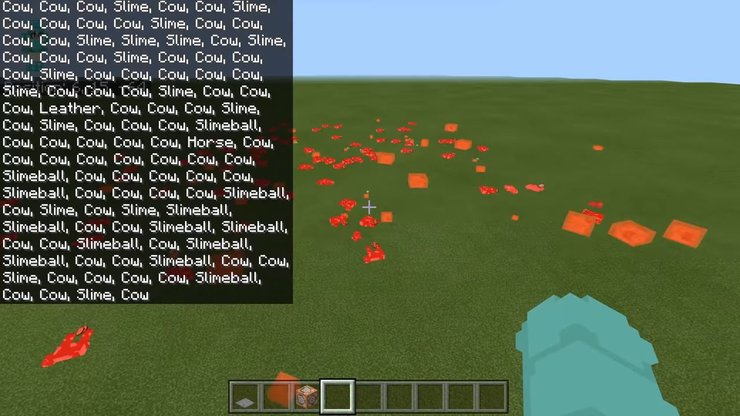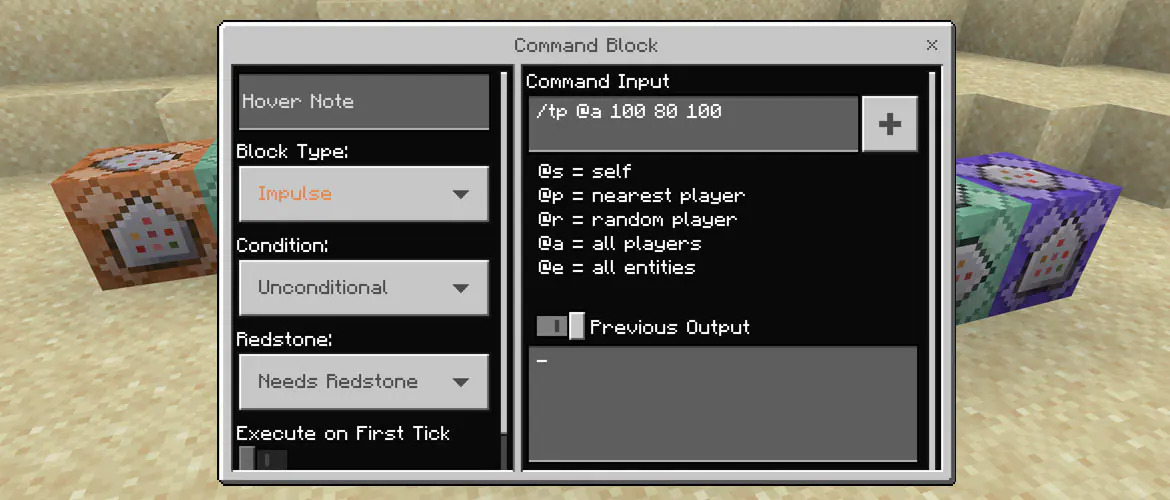In the boundless and imaginative realm of Minecraft, players encounter a diverse assortment of creatures known as mobs. These entities come in all shapes and sizes, from the docile and friendly animals to the menacing and malevolent monsters that lurk in the darkest corners of the blocky world. While some mobs are harmless and add charm to the landscape, others can be dangerous adversaries that threaten the very existence of the player’s virtual existence.
Learning the art of mob extermination is an essential skill for survival and progress within the game. As the sun sets, the once serene landscapes transform into treacherous terrains inhabited by hordes of hostile mobs, eager to challenge the player’s wit and prowess. Each mob possesses unique attributes, from the speed and cunning of spiders to the explosive volatility of creepers. Understanding their behaviors and abilities is key to devising effective strategies for their annihilation.
Equipping oneself for the challenges ahead is vital. Crafting powerful weapons and protective armor is the cornerstone of every successful mob hunter’s arsenal. Players will delve into the vast array of materials available, learning how to create swords, bows, and axes that can deal devastating blows to their adversaries. Additionally, the art of enchanting and potion brewing will provide invaluable buffs, granting the player an edge against even the most formidable foes.
Yet, the battle against mobs goes beyond mere brute strength and magical enhancements. Crafting cunning traps and defensive structures can grant a significant advantage in dealing with mobs on your terms. Utilizing the environment to funnel and control mobs, or constructing fortifications to withstand their relentless onslaught, can be essential elements in a successful campaign of extermination.
As players delve deeper into the world of Minecraft, they will encounter a diverse assortment of mobs, each requiring unique tactics to conquer. From the mysterious and teleporting Endermen to the malicious and persistent zombies, understanding the strengths and weaknesses of each mob is the key to prevailing over them.
In this guide, we will explore the many facets of mob extermination in Minecraft, drawing on the knowledge and experience of seasoned adventurers. Whether you are a novice in need of guidance or an experienced player seeking to sharpen your skills, this guide will equip you with the tools and knowledge to take on any mob that stands in your path. So sharpen your sword, ready your bow, and prepare to face the challenges that await as we delve into the thrilling world of mob extermination in Minecraft.
How to Use the Kill Command in Minecraft

In Minecraft, the “kill” command is a powerful tool that allows players to eliminate entities, including mobs, players, and even themselves. The command can be particularly useful for map-making, debugging, or simply clearing out unwanted creatures or objects. To use the kill command effectively, follow these steps:
- Access the Chat Window: To input commands in Minecraft, you need to open the chat window. Press “T” on your keyboard (for PC) or the designated button on your platform (e.g., touch the chat icon on mobile devices, press the right button on consoles).
- Type the Command: To use the kill command, you’ll need to type it into the chat window. The basic syntax is as follows:
/kill [target]
- [target]: This is an optional parameter. If you leave it empty, the command will target the entity that executed the command (i.e., yourself). You can also specify a specific player’s username, mob type, or even other entities.
- Execute the Command: After typing the desired command in the chat window, press “Enter” to execute it. If you used the command without specifying a target, it will instantly eliminate your character, resulting in a respawn at the world’s spawn point.
Examples of the kill command:
- To kill yourself, simply type:
/kill - To kill a specific player (e.g., “Steve123”):
/kill Steve123 - To kill all zombies in the world:
/kill @e[type=zombie] - To kill all entities within a specific radius from you (e.g., 10 blocks):
/kill @e[distance=..10]
Important notes:
- Use the kill command with caution, especially if you don’t specify a target. Accidentally executing the command without targeting a specific entity may result in the loss of items and progress.
- The kill command is primarily available in Creative mode or in servers where command blocks are enabled. Players in Survival mode typically do not have access to this command, limiting its use to map-making or creative scenarios.
- Before using the kill command, consider creating a backup of your world to avoid any accidental losses or irreversible consequences.
By mastering the kill command, you gain an essential tool to manage your Minecraft world effectively, whether you need to debug, clear unwanted mobs, or simply challenge yourself with unique scenarios. Always remember to double-check the command’s syntax and be cautious to avoid any unintended consequences.
What are Minecraft Commands & How to Use Them?

Minecraft commands are a set of instructions or codes that can be used to modify the game environment, control entities, change game modes, and perform various actions within the Minecraft world. These commands are available in Minecraft’s “cheats” or “command” mode, typically accessible to players in Creative mode, or in servers where command blocks are enabled. Minecraft commands are an essential tool for map-making, server administration, and creative gameplay, allowing players to customize their experience and perform tasks that are not possible through regular gameplay mechanics.
To use Minecraft commands, follow these steps:
- Access the Chat Window: To input commands in Minecraft, you need to open the chat window. Press “T” on your keyboard (for PC) or the designated button on your platform (e.g., touch the chat icon on mobile devices, press the right button on consoles).
- Type the Command: Type the desired command into the chat window. Most commands begin with a forward slash (/) followed by the command keyword and any additional parameters or arguments.
For example, to change the time to day, you would type: /time set day
- Execute the Command: After typing the command, press “Enter” to execute it. The game will process the command, and the specified action or modification will take effect.
Some commonly used Minecraft commands include:
/gamemode: Used to change the player’s game mode (Survival, Creative, Adventure, or Spectator)./teleport: Teleports the player or entities to specific coordinates or other entities./give: Provides the player with items or blocks./kill: Eliminates entities, including mobs and players./effect: Applies status effects to players or entities./time: Manages the time of day or the game’s time cycle./weather: Changes the weather conditions (rain, clear, thunder) in the world./summon: Summons entities, including mobs and objects, at specified locations./tp: Teleports players or entities to other players or coordinates./execute: Executes other commands relative to specific entities.
Keep in mind that the availability and usage of commands can vary depending on the Minecraft version, the game mode, and server settings. Additionally, some commands might require the player to have administrative privileges, such as being an operator (OP) on the server.
Using Minecraft commands can greatly enhance your gameplay experience and enable you to perform tasks that would be challenging or impossible through standard gameplay mechanics. Experiment with different commands to discover their potential and unleash your creativity in the blocky world of Minecraft!
What is the Easiest Way to Kill Mobs in Minecraft?
The easiest way to kill mobs in Minecraft largely depends on the player’s resources, equipment, and available strategies. Here are some straightforward methods that can be effective in dealing with mobs:
- Sword or Melee Attacks: Using a sword or another melee weapon is a basic and effective way to take down most mobs, especially weaker ones like zombies, skeletons, and spiders. Approach the mob and repeatedly attack it until it is defeated. For more challenging mobs, consider upgrading your sword or using an enchanted one for additional damage.
- Bow and Arrows: Ranged attacks with a bow and arrows are great for dealing with mobs from a distance. This method is particularly useful against flying mobs like skeletons, ghasts, or blazes. Make sure to have a good supply of arrows and aim accurately to maximize your efficiency.
- Tactical Retreat: If you encounter multiple mobs or a particularly tough one, consider a strategic retreat. Find a defensible position or create a safe space, then take on the mobs one by one or wait until morning (if in the Overworld) to avoid hostile mobs during daylight.
- Lighting Up Areas: Many hostile mobs, such as zombies and skeletons, spawn in dark areas. By lighting up your surroundings with torches or other light sources, you can significantly reduce the number of hostile mobs around you, making it easier to navigate and avoid unnecessary battles.
- Creeper Avoidance: Creepers are infamous for their explosive attacks, which can deal massive damage to players and their surroundings. The easiest way to deal with creepers is to spot them from a distance and avoid getting too close. If they’re about to explode, back away quickly and let them detonate harmlessly.
- Potion Effects: Utilize potions to gain an advantage during mob encounters. Healing potions can restore health, while strength potions can increase your damage output. Fire resistance potions are useful when dealing with lava-based mobs in the Nether.
- Mob Farms and Traps: If you are in a well-established world and want a passive approach to mob farming, consider creating mob farms or traps. These structures use various mechanisms to automatically gather mobs and allow you to defeat them easily without putting yourself in direct danger.
Remember, as you progress in the game, you can obtain better equipment and enchantments, making it easier to defeat mobs. However, always exercise caution when engaging powerful mobs, especially those found in the Nether or the End. The easiest way to kill mobs might not always be the safest, so be prepared and adapt your strategy as needed.
How can I remove the Leftovers after Using the Kill command in Minecraft?
After using the “kill” command in Minecraft, the entities (mobs, players, or items) targeted by the command will be instantly removed from the game world. However, any items dropped by the killed entities will typically be left behind as “leftovers.” To remove these leftovers and clean up the area, you can use the following methods:
- Manually Collecting Items: The most straightforward method is to manually pick up the items dropped by the killed entities. Simply walk over the items to collect them, and they will be added to your inventory.
- Hopper Collection System: If there is a large number of items and you want to automate the process, you can create a hopper collection system. Place hoppers on the ground near the item drops, and they will automatically suck in items that come within their range. The hoppers can direct the items into chests or other storage containers for easy retrieval.
- Water Stream: Create a water stream that flows over the item drops, pushing them into a collection area. You can use waterlogged slabs or signs to control the flow and direction of the water.
- Commands to Clear Items: To instantly remove all dropped items in a specific area, you can use the “/kill” command with the “item” target selector. This command will eliminate all item entities without affecting mobs or players. For example:
/kill @e[type=item]
- Command Blocks or Redstone Mechanisms: You can set up command blocks or redstone contraptions that trigger the /kill command with the “item” target selector at regular intervals to automatically clear the area of items.
- Carry a Looting-Enchanted Weapon: If you have a weapon with the “Looting” enchantment, use it to increase the number of items dropped by mobs. This way, you can get more items quickly and reduce the number of leftovers.
Keep in mind that using the “/kill” command on item entities indiscriminately will permanently remove all dropped items, which may not be desirable in all situations. Be cautious when using commands to avoid accidentally losing important resources or items.
Additionally, it’s essential to consider the impact of clearing items in the game world, especially if you’re playing in Survival mode. Removing items may alter your progress or affect the economy of a multiplayer server. Always make backups of your world before experimenting with commands or automated systems to ensure you can revert to a previous state if needed.
Conclusion!
In conclusion, effectively dealing with mobs in Minecraft requires a combination of strategy, skill, and preparation. The game offers a variety of methods for players to eliminate these creatures and ensure their safety while exploring the vast and adventurous world.
Understanding mob behavior is key to anticipating their attacks and weaknesses. Each mob possesses unique traits that can be exploited to gain an upper hand in combat. Whether it’s the evasive Enderman, the explosive Creeper, or the relentless Zombie, learning their patterns is essential for survival.









